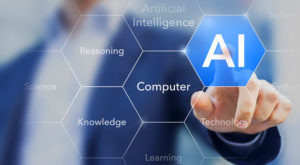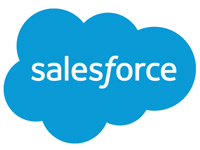
When Salesforce unveiled sales forecasting with its artificial intelligence tool, Einstein, my immediate reaction was that it should have tried something easier — like solving global warming. Really, a sales forecast that bears some resemblance to reality has been a grail quest for all of us for many years, and Salesforce is not the first software company to throw its hat in the ring.
On reflection, it’s not that the company should have tackled an easier problem, but that the success of a sales forecast is inversely proportional to the amount of human involvement in producing it. Because Einstein relies on AI and historical data, I can give it a higher probability of success than many other methods.
Avoiding Forecasting Pitfalls
You know a forecast is in trouble when it gets downloaded to a spreadsheet. Once optimism gets injected in the form of a spreadsheet jockey, you can abandon all hope. Not to be cruel, but the human brain is adept at playing tricks on itself and simultaneously assuring itself that it is not. Daniel Kahneman won a Nobel Economics Prize for figuring that out on the way to initiating the study of behavioral economics.
At any rate, that is exactly what Einstein Forecasting does not do. It is automated, and it gets human optimism out of the way and analyzes real historical data. It also compares present data about a deal with the history of a sales rep’s earlier deals to derive an understanding of where a deal is in its progression.
However, my experience is that this route really, really needs to include a sales process or model of how “we sell our stuff.”
Specifically, other AI systems have made discoveries, like higher rates of closure on deals where the budget owner/decision maker is involved in a demo, just to pick an easy example. It would be great if the AI system took that kind of history into account rather than simply discovering that one rep sandbags and another is overly optimistic.
Opportunity Scoring
It seems as though Einstein does. It is fully automated and able to understand process and key factors like seasonality, according to the company, and that’s great. Perhaps more important than the forecast at the end of a sales cycle is a less well-advertised capability, called “Einstein Opportunity Scoring,” that does exactly what you’d expect from such a product.
Getting the score right on a new opportunity does some valuable things. For instance, it focuses the rep on the best deals, not necessarily the easiest, and that automatically will make for a better pipeline that is easier to forecast.
You might think that opportunity scoring is a no brainer but it’s not; sales reps can waste a lot of time and resources chasing deals that will never close.
My Conclusion
To demonstrate how important all of this is for Salesforce, the corporate investment group, Salesforce Ventures, also announced a US$50 million innovation fund to promote development of increasingly better AI functionality on its platform.
Salesforce has broadened its outreach beyond traditional CRM in the last few years, and it now boasts applications in multiple subspecialties and vertical markets, like media and finance.
Einstein is a broad-based tool that can be applied to benefit almost any business or process. While this has been the year of Einstein, in which all elements of the portfolio have begun receiving an AI assist, it’s good to see the company paying attention to its CRM roots.
Forecasting and opportunity scoring are two of the more difficult challenges that we’ve faced in CRM, and it’s good that they’re receiving attention.

























































Social CRM
See all Social CRM